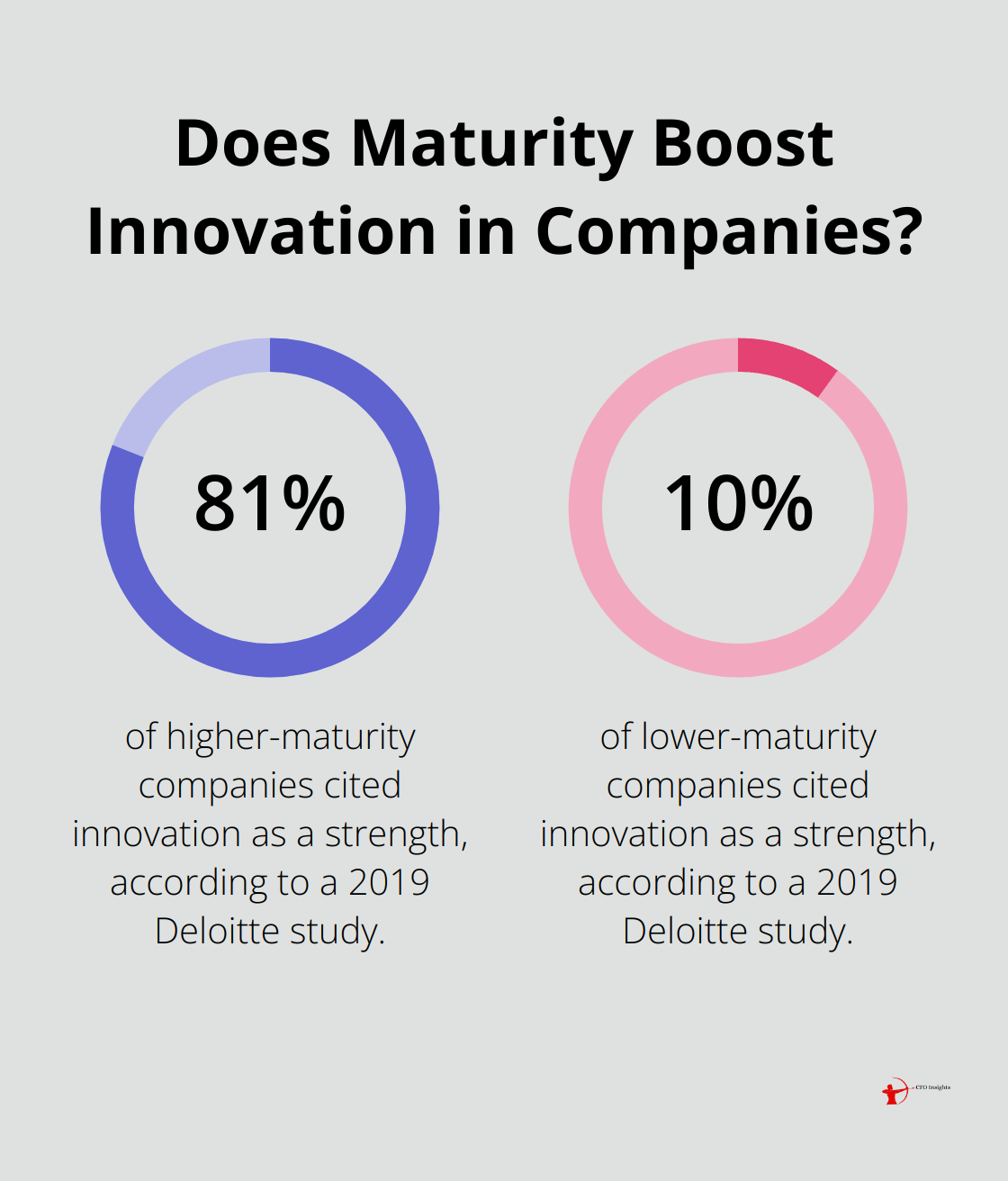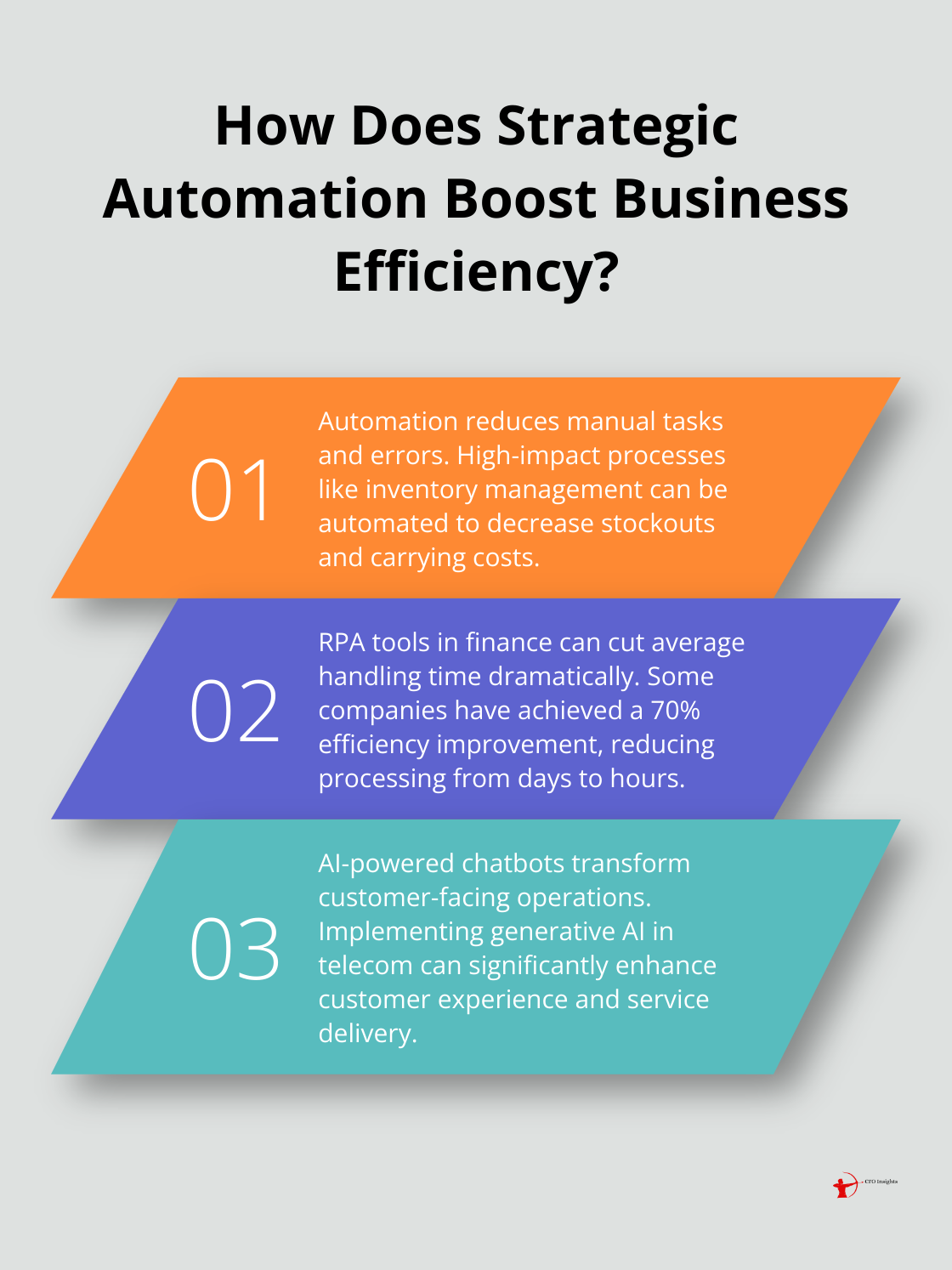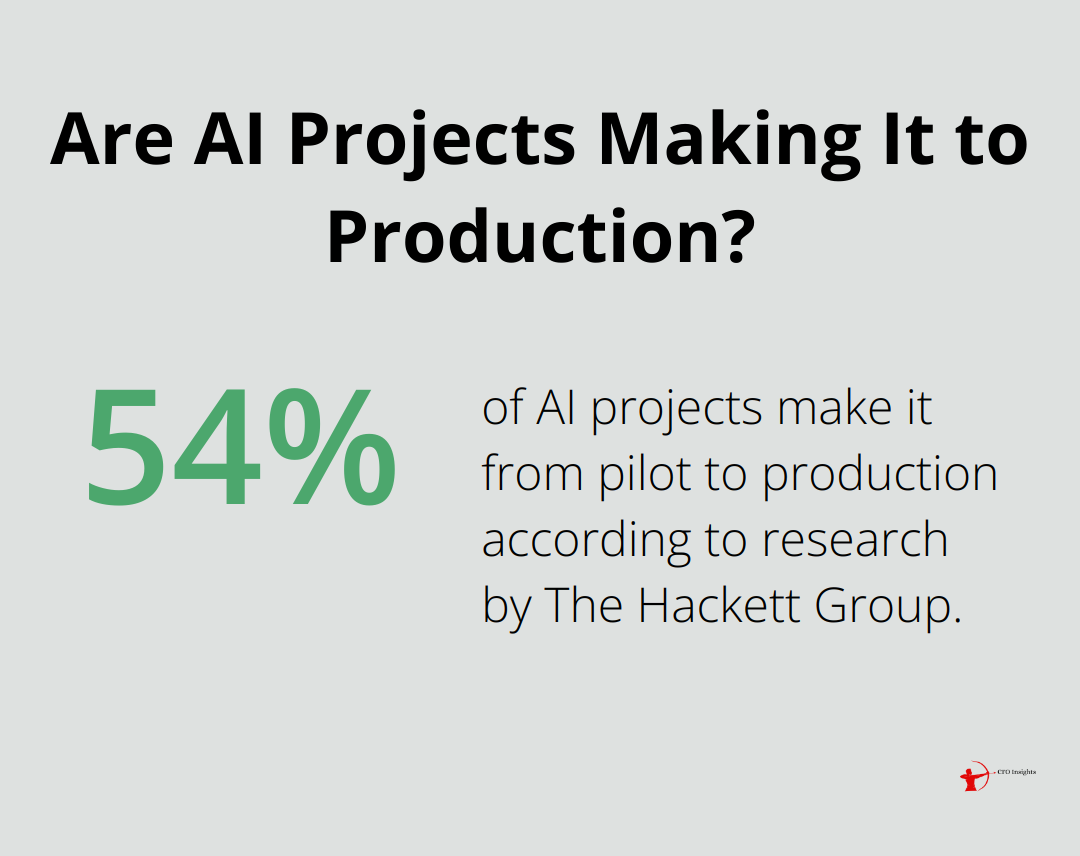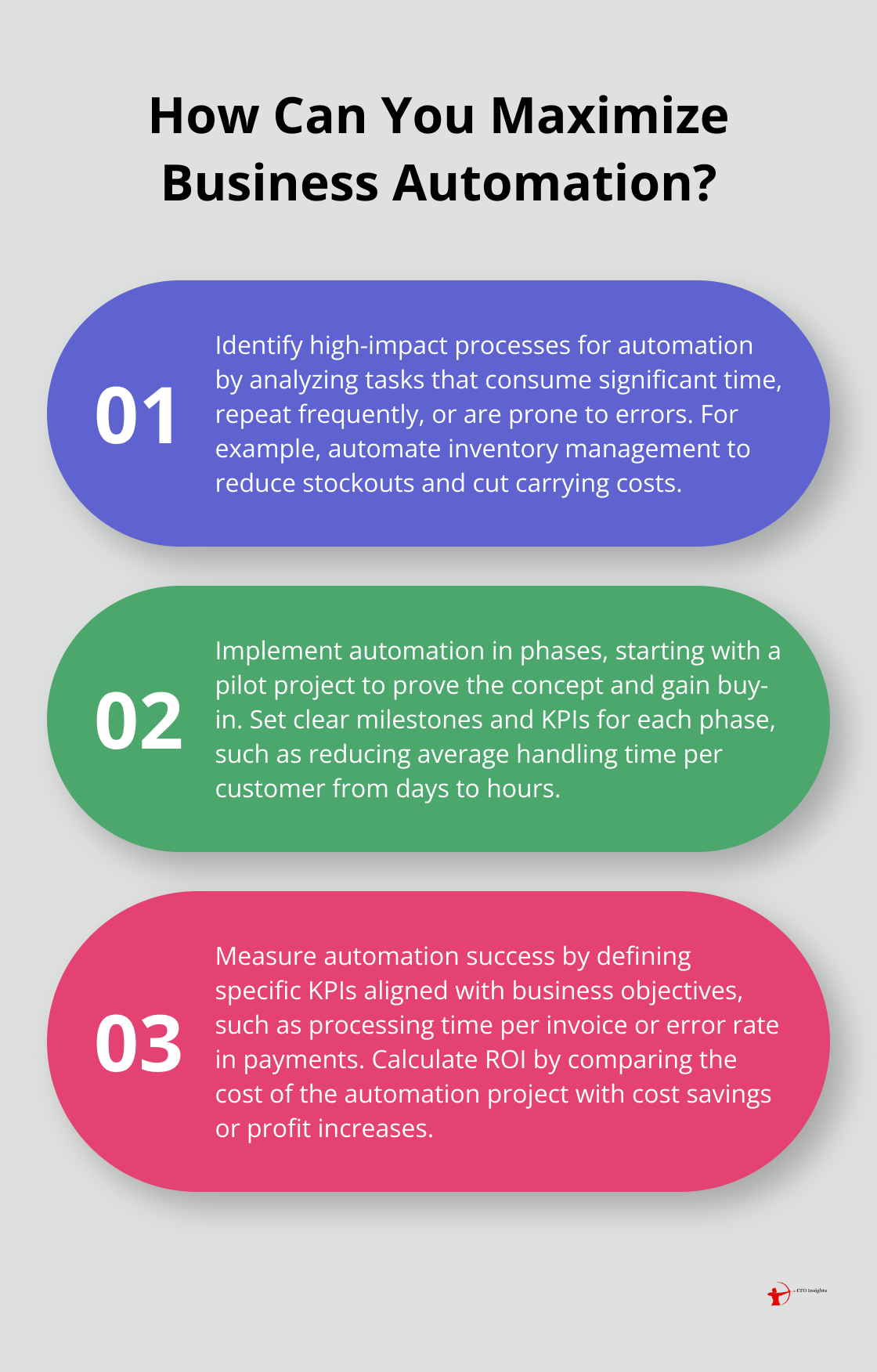Strategic automation is transforming how businesses operate, boosting efficiency and competitiveness. At CFO Insights, we’ve seen firsthand how this approach can revolutionize processes across industries.
Our strategic automation services help companies identify key areas for improvement and implement cutting-edge solutions. In this post, we’ll explore the essentials of strategic automation and guide you through its implementation for maximum impact.
What Is Strategic Automation?
Defining Strategic Automation
Strategic automation revolutionizes business operations by leveraging technology to automate complex, high-value processes aligned with long-term goals. This approach transcends simple task automation, focusing instead on transforming entire workflows and decision-making processes.
Strategic vs. Tactical Automation
While tactical automation targets simple, repetitive tasks, strategic automation encompasses broader business operations. For instance, a manufacturing company might use tactical automation to speed up assembly line tasks. In contrast, strategic automation would involve implementing an AI-driven supply chain management system that predicts demand, optimizes inventory, and adjusts production schedules in real-time.
Efficiency and Competitiveness Gains
The impact of strategic automation on business efficiency is significant. A study by McKinsey reveals that a significant share of workplace activity could be automated. This efficiency boost directly enhances competitiveness, allowing businesses to:
- Respond faster to market changes
- Deliver products and services more quickly
- Operate with greater agility
Real-World Applications
Strategic automation proves its worth across various industries. A financial services firm implemented an AI-powered risk assessment system that not only accelerated loan approvals but also improved the accuracy of credit decisions. This strategic move allowed them to capture a larger market share while reducing bad debt.
Challenges and Considerations
Implementing strategic automation comes with its set of challenges. It requires significant upfront investment in technology and often necessitates a cultural shift within the organization. However, the long-term benefits can be substantial. A 2019 Deloitte study found that 81% of higher-maturity companies cited innovation as a strength, versus only 10% of lower-maturity companies.

As technology continues to evolve, the potential for strategic automation will only grow. Companies that embrace this approach position themselves at the forefront of innovation, ready to tackle the next wave of business challenges. The next section will explore how to identify processes suitable for automation and choose the right tools to implement these strategies effectively.
How to Implement Strategic Automation
Identify High-Impact Processes
The first step in implementing strategic automation involves a thorough analysis of your business processes. Focus on tasks that consume significant time, repeat frequently, or are prone to errors. These often present the best opportunities for automation. For instance, a company might automate its inventory management system, potentially reducing stockouts and cutting carrying costs.

However, don’t limit your scope to obvious choices. Consider processes that, when automated, could provide a competitive edge. A retail business might automate its pricing strategy, enabling real-time adjustments based on competitor actions and demand fluctuations.
Choose Appropriate Tools
The market offers a wide array of automation tools. Your selection should align with your specific needs and existing technology infrastructure. For financial processes, Robotic Process Automation (RPA) tools often yield excellent results. Some companies have reduced their average handling time per customer from several days to just a few hours, resulting in a 70% efficiency improvement using these tools.
For customer-facing processes, AI-powered chatbots can transform operations. Implementing generative AI in telecom can improve customer experience, as demonstrated by success stories and potential use cases in the industry.
Develop a Phased Implementation Plan
Avoid the temptation to automate everything at once. Instead, start with a pilot project to prove the concept and gain buy-in. A logistics company began by automating their shipment tracking. The success of this project paved the way for broader automation initiatives.
Set clear milestones and Key Performance Indicators (KPIs) for each phase. This approach allows you to measure progress and make necessary adjustments. Try to achieve quick wins early on to build momentum and support for your automation efforts.
Prioritize Training and Change Management
Automation changes work processes, making it essential to prepare your team for these shifts. To ensure successful implementation, create a compelling vision and develop a clear communication plan. Ensure employee engagement throughout the implementation process and identify key stakeholders to drive adoption.
Strategic automation is an ongoing journey that requires continuous reassessment and optimization. As you progress through your automation initiatives, you’ll need to measure their impact and adjust your strategies accordingly. The next section will explore how to effectively gauge the success of your automation efforts and calculate their return on investment.
How to Measure Automation Success
Defining Key Performance Indicators
The first step in measuring automation success requires the identification of the right Key Performance Indicators (KPIs). These metrics should align with your business objectives and the specific processes you’ve automated. For example, if you’ve automated your accounts payable process, relevant KPIs might include:
- Processing time per invoice
- Error rate in payments
- Number of invoices processed per employee
- Cost per invoice processed
Calculating Return on Investment
Determining the ROI of your automation initiatives is essential for justifying the investment and guiding future decisions. To calculate the direct ROI on any given BPM project, the cost of the BPM project is compared with any cost savings made or increases in profit.

When calculating costs, consider not just the initial investment in technology but also ongoing maintenance, training, and any process redesign expenses. A comprehensive ROI analysis provides a clearer picture of the true value of your automation efforts.
Strategies for Continuous Improvement
Measuring success is not a one-time event but an ongoing process. To ensure your automation initiatives continue to deliver value, consider these strategies:
- Regular audits: Conduct periodic reviews of your automated processes to identify any inefficiencies or areas for improvement.
- Feedback loops: Establish mechanisms to gather feedback from employees and customers interacting with the automated processes. This qualitative data can provide valuable insights that may not be captured by quantitative metrics alone.
- Benchmarking: Compare your performance against industry standards and best practices. The Hackett Group’s research shows that on average, 54% of AI projects make it from pilot to production.
- Iterative improvements: Use the insights gained from your measurements to make incremental improvements to your automated processes. An investment in business process automation is one of the fastest ways to improve efficiency and productivity across every department: sales, and more.
Leveraging Expert Guidance
While measuring automation success can seem daunting, expert guidance can simplify the process. CFO Insights specializes in helping organizations optimize their finance teams’ performance and value. Our fractional CFO services provide strategic insights and financial expertise without the commitment of a full-time hire. We partner with companies to implement best practices in financial management, improve cash flow, and support growth initiatives, all while ensuring personalized attention and customized solutions.
Final Thoughts
Strategic automation revolutionizes business processes, enhancing efficiency and competitiveness. Companies that implement these technologies position themselves at the forefront of innovation, ready to tackle future challenges. Advancements in AI and machine learning will further expand the capabilities of automation, enabling more sophisticated decision-making and predictive analytics.

The time to act is now. Businesses must embrace strategic automation to unlock new levels of efficiency and stay ahead of the competition. Our strategic automation services at CFO Insights help organizations optimize their finance teams’ performance through fractional CFO expertise.
We partner with companies to implement best practices, improve cash flow, and support growth initiatives. Our personalized attention and customized solutions (tailored to each client’s needs) ensure optimal results. Don’t let your business fall behind-revolutionize your processes with strategic automation today.
One thought on “Strategic Automation: Revolutionize Your Business Processes”
Leave a Reply
You must be logged in to post a comment.





[…] and strategies to ensure the success of your business. One article that caught my attention is “Strategic Automation: Revolutionize Your Business Processes”. This insightful piece delves into the importance of incorporating automation into your operations […]